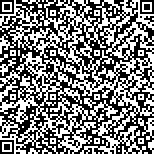| 引用本文: | 孙磊,杨臻辉,恽茜,黄金林.基于全基因组序列的弯曲菌特征分析[J].生物信息学,2020,18(4):254-262. |
| SUN Lei,YANG Zhenhui,YUN Xi,HUANG Jinlin.Feature analysis of Campylobacterbased on whole genome sequences[J].Chinese Journal of Bioinformatics,2020,18(4):254-262. |
|
| |
|
|
| 本文已被:浏览 1591次 下载 1277次 |

码上扫一扫! |
|
|
| 基于全基因组序列的弯曲菌特征分析 |
|
孙磊1,2,3,杨臻辉1,2,恽茜3,4,黄金林3,4
|
|
(1.扬州大学 信息工程学院,江苏 扬州 225127;2.扬州大学 人工智能学院,江苏 扬州 225127; 3.江苏省人兽共患病学重点实验室,江苏 扬州 225009; 4.江苏省动物重要疫病与人兽共患病防控协同创新中心,江苏 扬州 225009
|
|
| 摘要: |
| 空肠弯曲菌(Campylobacter jejuni)和结肠弯曲菌(Campylobacter coli)是引起人类腹泻的主要致病菌。传统生化方法在鉴定弯曲菌时存在步骤多、耗时长、通量低等问题。本研究通过利用生物信息学方法对弯曲菌全基因组进行序列、基因注释、耐药基因、多位点序列分型以及CRISPR-Cas系统等分析,挖掘能够有效区分空肠弯曲菌和结肠弯曲菌的高分辨力特征。实验结果表明,空肠弯曲菌和结肠弯曲菌在基因组序列长度、GC含量、基因数量、多位点序列分型以及CRISPR-Cas系统等方面存在显著差异。同时,研究还发现了一段在空肠弯曲菌基因组中广泛存在的高分辨力CRISPR重复序列。这些特征可用于构建能够准确鉴别空肠弯曲菌和结肠弯曲菌的生物信息学方法。 |
| 关键词: 弯曲菌 全基因组 多位点序列分型 CRISPR-Cas系统 |
| DOI:10.12113/202002005 |
| 分类号:Q93 |
| 文献标识码:A |
| 基金项目: |
|
| Feature analysis of Campylobacterbased on whole genome sequences |
|
SUN Lei1,2,3,YANG Zhenhui1,2, YUN Xi3,4,HUANG Jinlin3,4
|
|
(1.School of Information Engineering, Yangzhou University, Yangzhou 225127, Jiangsu, China; 2.School of Artificial Intelligence, Yangzhou University, Yangzhou 225127, Jiangsu, China; 3.Jiangsu Key Laboratory of Zoonosis, Yangzhou 225009, Jiangsu, China; 4.Jiangsu Co-Innovation Center for Prevention and Control of Important Animal Infectious Diseases and Zoonosis, Yangzhou 225009, Jiangsu, China)
|
| Abstract: |
| Campylobacter jejuniand Campylobacter coliare the main pathogenic bacteria that cause diarrhea in humans. Traditional biochemical methods have problems such as multiple steps, time consuming, and low throughput when identifying Campylobacter. In this study, several analyses including sequence analyses, gene annotation, drug resistance gene prediction, multilocus sequence typing (MLST), and CRISPR-Cas system finding were performed on the whole genomes of Campylobacterusing various bioinformatics methods, thereby exploring highly effective features for distinguishing Campylobacter jejuni from Campylobacter coli. Experimental results manifest that Campylobacter jejuniand Campylobacter colihave significant differences in genome sequence length, GC content, gene number, MLST, and CRISPR-Cas systems. In addition, we found a highly distinguishable CRISPR repeat sequence that is widespread in Campylobacter jejuni. It is concluded that these features can be used to construct bioinformatics tools for identifying Campylobacter jejuniand Campylobacter colimore accurately. |
| Key words: Campylobacter Whole genome Multilocus sequence typing CRISPR-Cas system |
|
|
|
|






